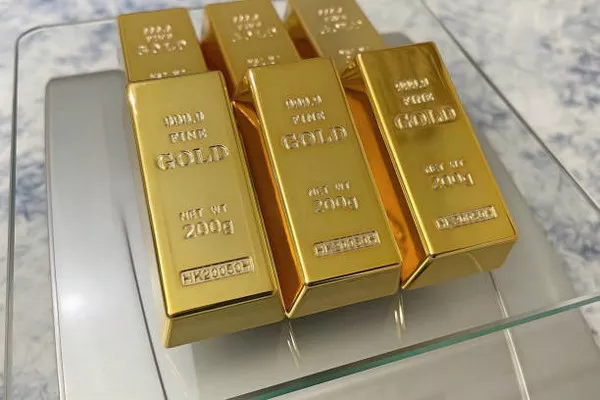On Tuesday, spot gold briefly relinquished its grip on the $1,900 territory before making a modest recovery, impacted by the resurgent US dollar and rising Treasury yields that weighed on the precious metal.
Gold’s most active futures contract on New York’s Comex, December, settled down by $16.80, equivalent to a 0.9% decrease, closing at $1,919.80 an ounce. During the session, December gold reached a low of $1,917.35.
The spot price of gold faced a decline of $15.64, or 0.8%, reaching $1,900.29 by 15:15 ET (19:15 GMT).
Spot gold, which is determined by real-time trades in physical bullion and closely monitored by some traders, dipped to a session low of $1,899.21, slipping beneath the crucial $1,900 support level.
Craig Erlam, an analyst at the online trading platform OANDA, remarked that a drop below the $1,900 mark could be considered a highly bearish development, potentially drawing attention to the August lows, which are not too far away. However, there is also the possibility of further consolidation, as some support was evident around the $1,900 level.
In August, spot gold had tumbled to as low as $1,884.35.
The renewed weakness in gold prices this month is attributed to the combined impact of surging Treasury yields, which are benchmarked against the US 10-year note, and the strength of the US dollar.
Yields reached fresh 16-year highs on Tuesday, reaching levels unseen since July 2007.
The Dollar Index surged to highs last witnessed in November 2022. A stronger dollar typically discourages those holding other currencies from purchasing dollars.
As an alternative to gold, Treasury yields and the US dollar have gained momentum following the Federal Reserve’s projection last week of an additional quarter-percentage point rate increase by year-end, despite maintaining unchanged rates in September at its policy meeting.
Federal Reserve Chair Powell expressed concerns about inflation driven by energy costs, emphasizing the central bank’s readiness to raise rates further if necessary. He clarified that the decision to maintain the policy rate at the meeting did not imply that the Fed had reached a definitive stance on monetary policy.
Between February 2022 and July 2023, the Fed had raised interest rates 11 times, resulting in a cumulative increase of 5.25 percentage points from the prior base rate of 0.25%.
Economists are concerned that the Fed’s renewed hawkish stance could dampen global economic growth. However, many also acknowledge the need to control oil prices in order for the Fed to achieve its annual inflation target of 2%.


